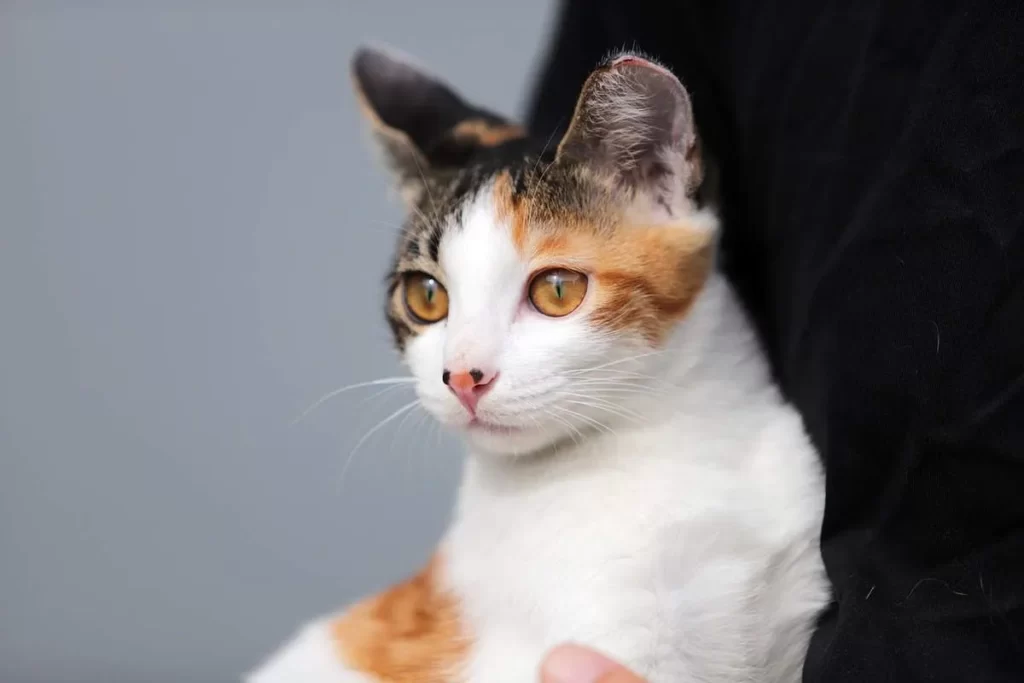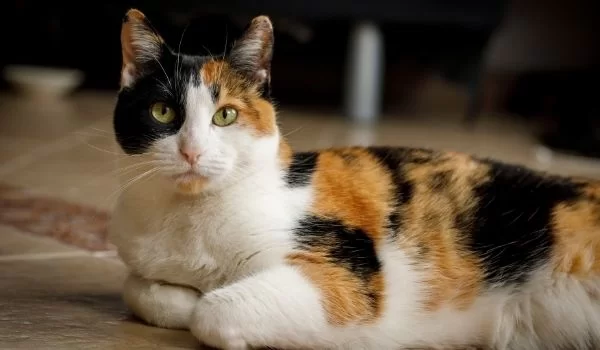There is no doubt that Calico cats are rare, and that’s not all. There is so much to know. So, if you’re interested to know about Calico cats, then continue reading this blog post and know the vital aspects.
Should you breed a calico cat?
Male Calico cats are rare, and if you are trying to breed one, then it will be a bust. However, one out of 3000 calico cats is male as per Missouri’s University, and they are usually sterile. On the other side, the Leslie A Lyons (feline genetic expert) Calico or tortoiseshell male cats have abnormalities in the chromosomes X and Y, which lead to infertility.
Calico is not a breed; it is colour patterns such as orange, white, and black which governed by genetics. Whether you have a male or female cat, be it orange, white or black. Mainly, the colour of a male cat is generally expressed in stripped, tabby or pattern.
Besides, gene determines the colour of the cat. For instance, the X chromosome displays orange. The male cats have X chromosomes, whereas the female includes two chromosomes, X and Y. If the cat is to be Calico, the animal need to have two X chromosomes. So, if a cat has two chromosomes, this means a cat will be female (most often).
On the other hand, Calico colour pattern exists in a male Calico. The reason for this is the cat has uncommon circumstances of three Chromosomes in which two are X and Y in male. So, if both X chromosomes transmit the design, you will be having a rare cat (male Calico).
Thus, these unusual XXY animals result in faulty cell division, which is known as Klinefelter males. So, if you have the Calico cat, you can use them as an asset to earn income. However, you might be disappointed as they have less fertility. Enjoy what you have.

Does male Calico Cats intersex?
Calico Cats are domestic cats of any breed with triple colours. It is a most common thought that typically 25%-45% white in colour with light orange and mix of black colour patches. However, the Calico can have three colours, and it is an almost exclusive female except under genetic conditions.
Here, you will not be confused with tortoiseshell that has often been moulted with black/orange/and grey. Calico offers colour patterns on their fur skin, as well as colourful printed Calico cloth, which is not intended for breeding.
Calico cats are virtually always female because the X chromosome is involved in the genetic determination of their coat colours. One colour is related to the maternal X chromosome, while the other colour is linked to the paternal X chromosome.
Males are often only one colour (for example, black) since they only have one X chromosome, which means they are only one colour. Calicoes can appear in a male cat when the male cat is born with an extra set of X chromosomes.
When the cat is born as a chimaera, which has two different cell types, or when some skin cells in the kitten’s developing skin spontaneously mutate. Some calico cats, known as dilute calicos, are lighter in overall colour than other calicos.
In contrast to the usual black, red, and brown patches seen on calicos, dilutes are differentiated by the presence of grey (known as blue), cream, and gold hues instead of the black, red, and brown patches found on calicos.
Which is the rarest Calico cat in the World?
Amur Leopard is the rarest Calico cat in the World that you can find in the land of Russia, Leopard National Park. There you will find 57 cats, according to the census. In this park, you will find lots of animals, as it is popular as a breeding area. Although, this national park became the main organization to protect leopards and other animals.
Myths and facts about Calico Cat
Most cat owners are heard about lots of fascinating myths and facts about Calico cats. These are rare cats, and there is no demand for them. They do not make breeding studs since all Calico males are sterile. The truth is approximately 10,000 Calico cats are fertile.
The Chromosomes determine the colour
If we simply put it in words, among Calico cats, Chromosomes determines the gender of cats. Cat parents give one chromosome to the progeny, which always has X chromosomes. For instance, a female cat contributes X chromosomes while a male contributes either X and Y to progeny.
Therefore, there is only one male who is responsible for the sex of a kitten. If the gene is red colour is passed away from the female cat, she will not expect the kitten in red or orange colour. However, tricolour (orange, black, and white) is the Calico cat.
The Genetics of Male Calico Cats
How can the male be the true Calico? There can be an incomplete distribution of the Chromosomes pair at the time of releasing chromosomes. When this happens, the chromosomes will end up without attaching two chromosomes.
The following combination of chromosomes can give birth to the offspring.
XX+ Y=XXY
XY+X=XXY
So, you see, in both cases, XXY is the true inheritance of the true Calico cat.
Does calico cat bring a high price?
There is a rumour that a Calico Cat brings a high price between all breeders. Although, you can check multiple sites claiming to fetch the Calico cat at $1,000 to $2,000. There is an exciting phenomenon- they are the little interest to breeders since they are sterile. So, if you are thinking to buy a rare cat (Calico), then do not pay extra; keep it the same or a little more than domestic cats.
Which is the breed of male Calico?
- British shorthair
- Manx
- Persian
- Scottish folds
- Siberian
- American Shorthairs
If you’re interested to read more o the same, click here.

The Bottom Line
With the above statement on Calico cats, we hope you now know everything related to them. These are rare cats like house cats, but the difference is only they breed after three chromosomes and come in tricolour. So, if you want to have it for your home, then go ahead.
